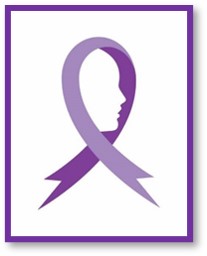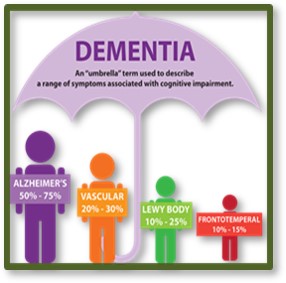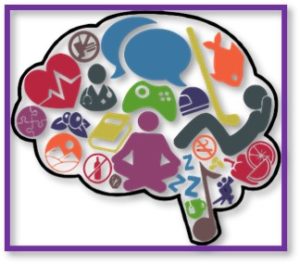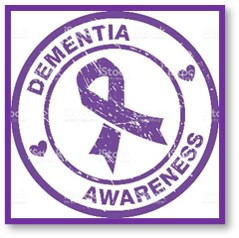Monday Author: Susanne Skinner
Every 65 seconds someone in the United States develops Alzheimer’s. Out of the five million Americans diagnosed, 64 percent are women. Two thirds of those caring for them are also women. These statistics are enough to make me ask why this disease strikes women more severely and aggressively than men.
The Odds are Not in Our Favor
 The simple explanation is women live an average of four to five years longer than men do. Men are more likely to die of heart conditions in their 50’s and 60’s. Once women reach the age of 60, they are more likely to develop Alzheimer’s than breast cancer, and twice as likely to develop Alzheimer’s as their male counterparts.
The simple explanation is women live an average of four to five years longer than men do. Men are more likely to die of heart conditions in their 50’s and 60’s. Once women reach the age of 60, they are more likely to develop Alzheimer’s than breast cancer, and twice as likely to develop Alzheimer’s as their male counterparts.
Alzheimer’s is a disease that starts 20 years before the diagnosis, affecting men and women differently. In terms of disease development and progression, women draw the short straw. They perform better on dementia diagnostic tests than men, meaning the disease is more advanced by the time it is confirmed. Women also experience a more dramatic decline in their cognitive abilities than men do.
A 2014 study found that women who carry the APOE gene variant were twice as likely to develop Alzheimer’s as women without the gene.
Genetically, women’s odds are simply higher.
The APOE Gene
One of the greatest biological risks comes from a gene called APOE4, a gene that tells the body how to make a protein called apolipoprotein E (APOE). This gene makes molecules that carry cholesterol and other fats through the bloodstream. It is also important for brain development and repair of brain function after injury or inflammation. It is the most common gene associated with late-onset Alzheimer’s.
 Women also experience hormone fluctuations during menopause. These may interact with the gene, explaining why their brains are more susceptible to Alzheimer’s. Women between the ages 40 and 50 can experience a drop in estrogen, progesterone and testosterone levels. These changes cause hot flashes, trigger bouts of depression, and studies show they can have an impact on the brain.
Women also experience hormone fluctuations during menopause. These may interact with the gene, explaining why their brains are more susceptible to Alzheimer’s. Women between the ages 40 and 50 can experience a drop in estrogen, progesterone and testosterone levels. These changes cause hot flashes, trigger bouts of depression, and studies show they can have an impact on the brain.
Dementia: All in the Family
Dementia is the parent company, and it has four major subsidiaries: Alzheimer’s, Vascular Dementia, Lewy Body and Frontotemporal. Alzheimer’s is the most common, generally appearing in people over sixty.
 Each of these subgroups has symptoms affecting cognitive, psychological and physical health. Loss of memory, thinking and social abilities become severe enough to interrupt, and eventually rob the individual’s quality of life.
Each of these subgroups has symptoms affecting cognitive, psychological and physical health. Loss of memory, thinking and social abilities become severe enough to interrupt, and eventually rob the individual’s quality of life.
The Framingham (MA) Heart Study found that because men are more likely to die from heart disease in middle age, men living past 65 might have healthier hearts, which may protect their brain from Alzheimer’s.
Dementia and Brain Health
Damage, or loss of nerve cell connections within the brain, is the root cause of dementia. Depending on the area of the brain affected, differences can be more prevalent in one gender because rate and degree to which symptoms develop may be different.
Experts believe modifying behavioral risk factors can prevent or delay up to one third of dementia. A delayed onset by five years reduces the incidence rate by up to fifty percent. Cognitive decline can also be offset by making lifestyle changes, including regular physical activity, staying socially engaged, and maintaining good heart health.
 A diet low in fats and high in antioxidants, including leafy greens, whole grains, nuts, and berries provides beneficial fats that protect your brain. Physical activity, including exposure to natural sunlight, positively affects the health of your blood vessels, including those in your brain. It also improves neuroplasticity.
A diet low in fats and high in antioxidants, including leafy greens, whole grains, nuts, and berries provides beneficial fats that protect your brain. Physical activity, including exposure to natural sunlight, positively affects the health of your blood vessels, including those in your brain. It also improves neuroplasticity.
Neuroplasticity is the ability of the brain to change continuously throughout an individual’s life. Essentially, brain activity associated with a given function can be transferred to a different location, forming a new connections in response to experiences, learning, or even an injury.
Sign up for the Be Brain Powerful 30 day Challenge and invest in better brain health.
Women and Alzheimer’s: Impact and Awareness
- 2 million people over the age of 65 have Alzheimer’s and 3.6 million are women.
- 1 out of 6 women over the age of 60 will develop the disease
- Women have a higher risk of developing dementia after the age of 45
- 13 million women are living with Alzheimer’s or caring for someone who has it.
- 19% of women caregivers quit work to become a caregiver or because their care-giving duties became overwhelming
- 60%of dementia caregivers are women, one-third are daughters.
- The economic burden of dementia on women is estimated to be $91.1 billion
- The number of Americans with Alzheimer’s will reach 14 million by 2050
- Globally that number is projected to be 5 million
- The World Health Organization lists dementia as one of the top five causes of death for women
Most of us know someone affected by dementia. It is a disease with two faces. If you are caring for or know someone battling dementia, you learn to separate your loved one from the illness and the illness from your loved one.
I have written about my sister’s journey and my personal learning curve. There is no single, one-size-fits-all treatment or cure. Researchers continue their efforts to identify gender-specific methodologies to improve the diagnostics, care and quality of life for women affected by dementia.
This month AARP will release a report with
Maria Shriver’s Women’s Alzheimer’s Movement called:
“It’s Time to Act: The Challenges of Alzheimer’s and Dementia for Women.”

